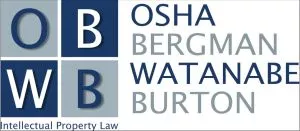- in Canada
The recent case of Maquet Cardiovascular LLC v. Abiomed Inc.1 examined the application of prosecution disclaimer and its effect on the interpretation of claims in descendant patents. In patent law, the doctrine of prosecution disclaimer plays a critical role in claim interpretation by limiting the scope of a patent based on statements made by the applicant during prosecution. When a patent applicant clearly and unmistakably disavows certain claim scope to overcome prior art or to distinguish their invention, courts may construe the claims narrowly in accordance with those statements. This legal principle ensures consistency and fairness by preventing patent owners from asserting broader rights in litigation than what was represented to the U.S. Patent and Trademark Office (USPTO) during examination. Understanding prosecution disclaimer is essential for navigating patent infringement disputes, as it directly impacts how patent claims are interpreted and enforced.
Maquet sued Abiomed in 2017 for infringement of U.S. Patent No. 9,789,238, relating to an intravascular pump system for deploying a blood pump to a desired location in a patient's circulatory system. Maquet later added allegations of infringement regarding U.S. Patent No. 10,238,783, which issued from a divisional application filed in 2018. The district court in 2022 issued a claim construction decision, ruling that during the prosecution of the applications issuing as the '238 patent and U.S. Patent No. 8,888,728 (the great-great-grandparent of the '783 patent), Maquet had disavowed certain claim scope. Thus, the district court found that the disclaimers during prosecution of the '238 and '728 patents led to a disclaimer in all related patents, including the '783 patent. Based on the court's claim construction order, Maquet and Abiomed stipulated to non-infringement of both patents and the court entered final judgment.
Although Maquet did not challenge the judgment for the '238 patent, Maquet disputed both the prosecution disclaimer in the prosecution history of the earlier '238 and '728 patents and its effect on the interpretation of the claims of the related '783 patent. On appeal three claim terms were at issue, "guide mechanism" in claim 1 and "guide wire" in claims 1 and 24. The question before the U.S. Court of Appeals for the Federal Circuit was whether the district court erred in its application of prosecution disclaimer in its interpretation of the three claim terms.
As a general rule, words of a claim are given their ordinary and customary meaning. However, this ordinary meaning must be assessed in light of all underlying evidence, including the claims themselves, the specification, and the prosecution history. The prosecution history can shed light on how the inventor understood the invention and may reveal whether the applicant limited the claim scope during prosecution, thereby narrowing the claims beyond their "ordinary and customary" meaning.
The doctrine of prosecution disclaimer applies when an applicant clearly and unequivocally disavows a particular claim scope in order to obtain the patent, and the affected claim's meaning is subsequently narrowed in line with the scope of the disavowal. The evidentiary standard is high. A disavowal will only be binding when the patentee's statements are "clear and unmistakable." An applicant's silence in response to an examiner's notice of allowance will generally not rise to a clear and unmistakable claim disavowal.
A disclaimer made during the prosecution of a patent application may operate as a disclaimer with respect to later patents of the same family. This applies when the scope of the claim limitation is substantially the same in the subsequent application as it was in the earlier application. The courts evaluate the similarity between the earlier and later claim limitations, carrying disclaimer forward if there are only immaterial differences.
The first claim term at issue in Maquet was found in claim 1 of the '783 patent and consisted of the limitation "guide mechanism comprising a lumen," with no requirement for the lumen to be in a specific position or have a specific length. Conversely, the corresponding claim in the '238 patent made no mention of a guide mechanism. Instead, the '238 patent originally described an "entire elongate lumen distal to the intravascular blood pump," and after amendment, the claims referred to an entire elongate lumen "distal to the rotor." The district court decided that Maquet's acquiescence to an Examiner's revision of the terms in the '238 patent resulted in a disclaimer of a lumen distal to the cannula in all related patents, including the '783 patent.
Maquet argued that the district court erred by basing its decision on an amendment from the prosecution history of a different patent (the '238 patent) that involved a different claim term. The Federal Circuit agreed that the first claim term of the '783 patent and the corresponding term in the '238 patent were not sufficiently similar such that the prosecution history of the latter would be relevant when construing the former.
The second and third terms were referred to collectively by the courts as the "guide wire" terms. The second term, found in claim 1 of the '783 patent, required that the "guide mechanism is configured to allow a guide wire to slideably advance therealong," and the third term, found in claim 24, required that the "guide wire does not pass through the rotor hub of the catheter." Maquet argued that the district court had erred in applying prosecution disclaimer when it construed the terms to include a negative limitation imported from the prosecution history of the great-great grandparent of the '783 patent, i.e., from the '728 patent. Abiomed argued that Maquet had surrendered any claim to a pump that employed a guide wire extending through the space between the rotor blades.
The Federal Circuit found the "guide wire" language of the second term in both the '783 and '728 patents to be sufficiently similar to warrant consideration of the earlier prosecution history. In fact, during the Markman hearing, Maquet had admitted that no substantial change had been made to the "guide wire" language of the '783 and '728 patents. As a result, the prosecution history of the '728 patent was deemed relevant to interpretation of the second term in the '783 patent.
At issue in evaluation of the prosecution history was a second Notice of Allowance received by the applicant during the prosecution of the '728 patent in which the Examiner cited a reference – Völker – that disclosed threading the guide wire through the rotor blades, temporarily preventing the rotor from turning. Maquet did not respond to that Notice. As a result, the district court deduced Maquet's silence to the Notice to be an acceptance of the Examiner's interpretation, and the negative limitation from the '728 patent was imported into the second term of the '782 patent.
The Federal Circuit viewed the matter differently in view of Maquet's silence in response to the Notice. The court thus held that prosecution disclaimer did not apply to the second term because, despite the claim terms of the patents being nearly identical, the negative limitation applied to the '728 patent due to Völker could not be applied to the second term in the '783 patent. In other words, while substantially similar claim limitations are necessary for application of prosecution disclaimer, that fact alone is not sufficient in all cases for application of the doctrine.
Continuing, the Federal Circuit determined the disputed "third" claim terms of the '728 and '783 patents were sufficiently different so as to preclude application of the doctrine. In particular, the '728 patent describes a "guide mechanism" that contains a lumen and a guide wire, while the '783 patent requires no guide mechanism but rather just a guide wire with a limitation that the guide wire does not pass through the rotor hub.
Ultimately, upon careful review, the Federal Circuit rejected the claim constructions made by the district court and vacated the district court's final judgement of non-infringement. The court found the "guide mechanism" term of claim 1 and the "guide wire" term of claim 24 to lack sufficient similarity with the earlier patents, and the "guide wire" term of claim 1 to have sufficient similarity but to lack clear disavowal of claim scope in the prosecution history. The court's analysis illustrates the detailed nature of application of prosecution disclaimer to descendant patents.
Footnote
1. 131 F.4th1330 (Fed. Cir. 2025).
The content of this article is intended to provide a general guide to the subject matter. Specialist advice should be sought about your specific circumstances.



